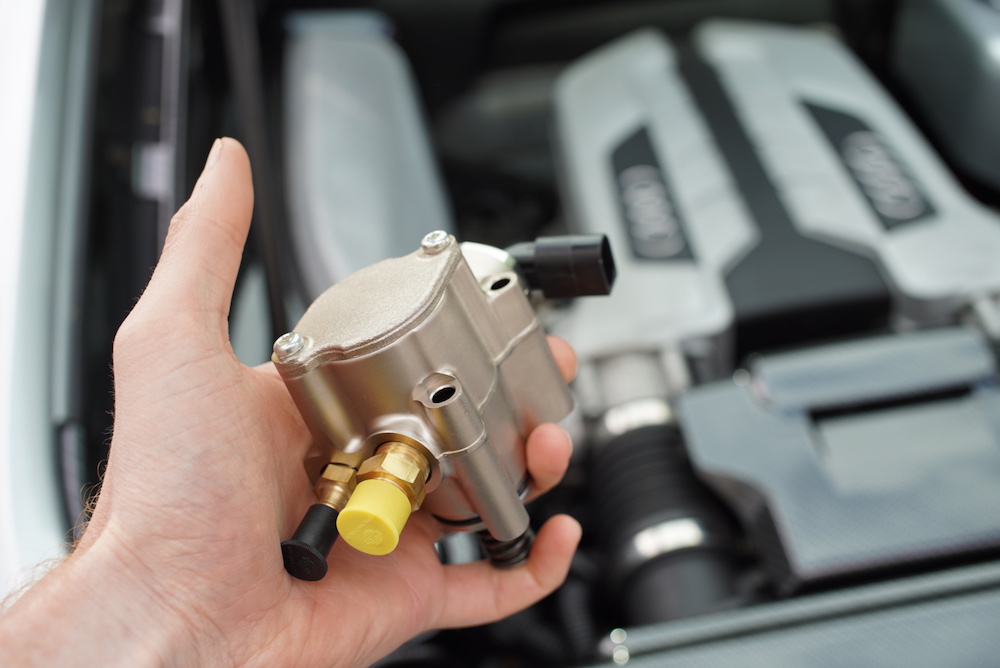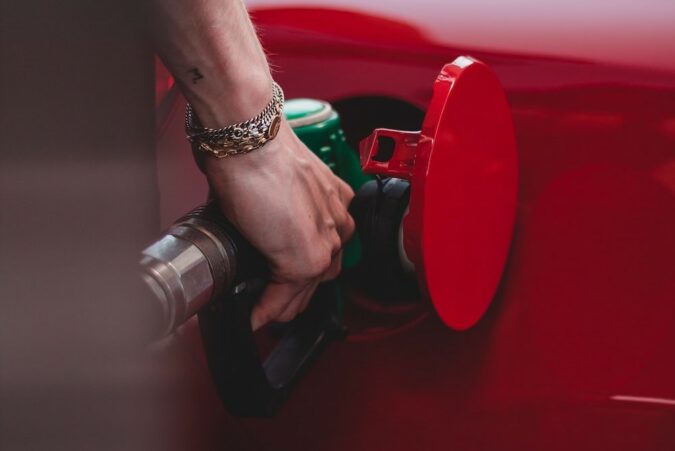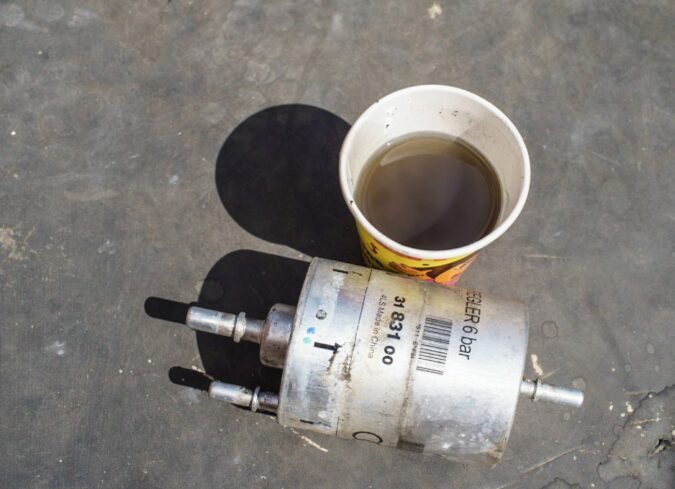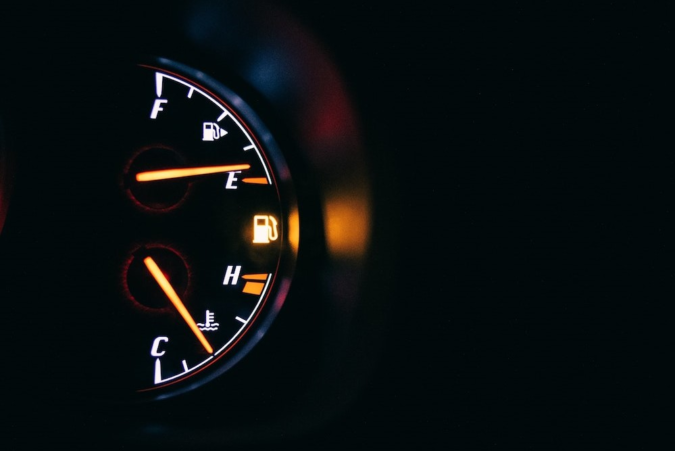A bad fuel pump can be scary to any driver. It is a common misconception that only mechanics can spot bad fuel pump symptoms since they get to work on the internal functions of your car. But this is completely false.
Yes, the fuel pump is located deep inside your car and is not visible externally. However, bad fuel pump symptoms are going to be visible from miles away. That’s if you know what to look out for you can pinpoint the problem to its source.
It’s a fact that over 90% of American households own a car. Also on average, a car burns $250 worth of fuel every month. That adds up to a whopping $3000 a year.
When you are paying this much for fuel every year, you could be concerned about the fuel economy of your car. A bad fuel pump can significantly make a huge impact in that department. Bad fuel pump symptoms include a decreased fuel economy, amongst many others.
Knowing when and what to keep an eye out for bad fuel pump symptoms will definitely help in getting those issues fixed promptly, and before it snowballs into something much worse.
The fuel lines are the veins of your car, and they are to be treated as such.
- What’s A Fuel Pump?
- Pros And Cons
- How It Functions
- How Long Does It Last?
- Symptoms Of Failure
- Fixes And Solution
- Replacement Costs
- DIY Troubleshooting
- FAQs
Fuel Pump
Before diving deep into the unknowns of the subject, it is necessary to know what we are talking about. In this case fuel pumps, What exactly is a fuel pump?
The fuel pump is a device set far back from your engine (for safety reasons) near your gas tank. It’s tasked with getting fuel from your gas tank to your engine.
There are 2 types of fuel pumps
- Mechanical fuel pumps
- Electrical fuel pumps
Though both serve the same purpose, they both are distinct in their own ways.
1. Mechanical Fuel Pumps
Mechanical fuel pumps siphon fuel from the gas tank. It then pushes it to the combustion chamber, when the engine is cranking or running. All mechanical fuel pumps used on inline 6-cylinder and V8 engines use a diaphragm design. As a result, no adjustments or repairs are usually possible.
A camshaft or camshaft gear is responsible to operate this sophisticated piece of equipment. An electrical lobe in the camshaft or camshaft gear operates the mechanical fuel pump.
On six-cylinder engines, the eccentric shaft rides directly on the fuel pump arm. On a V8 engine, a pushrod between the camshaft eccentric and the fuel pump operates the fuel pump arm.
2. Electrical Fuel Pumps
An electric fuel pump is also tasked with the same job as the mechanical fuel pump. Instead of relying on the camshaft or camshaft gear, an electric fuel pump is equipped with its own means to function.
These are usually much harder to fix due to the electrical components. It’s even harder to pinpoint where the problem is when it occurs. And replacing it is a headache as well and much harder to do yourself.
Mechanical vs Electric Fuel Pump
Both electrical fuel pumps and mechanical fuel pumps have sections where one is going to excel and one is going to fall behind. This doesn’t mean that one is necessarily better than the other. They both fit the criteria for different situations
Mechanical Fuel Pump
A mechanical fuel pump is considered more effective for daily driving cars focused on usage rather than high performance. A mechanical pump is slightly cheaper compared to an electronic pump. It makes less sound than the electrical version.
Moreover, it is very easy to install. Without too many electrical components or wirework, the installation is a walk in the park compared to an electric fuel pump. Even someone with a basic set of tools and little to no experience in the field, with the right guide, will be able to replace a mechanical fuel pump.
Now for the cons. The only problem with the mechanical fuel pump is the general lack of fuel pressure. It is not capable of supplying enough G.P.H (gallons per hour) as required for high-power engines. This makes it an awful choice for performance cars as they require more fuel for higher speeds and acceleration.
Mechanical fuel comes was the only kind of fuel pump used back in the day. But the demand for higher fuel pressure is on the rise, and modern cars are lacking mechanical fuel pumps these days.
Electrical Fuel Pump
The primary advantage of an electric fuel pump is its higher pressure. It can deliver fuel to the engine at a much higher rate. This capability of the modern fuel pump has propelled it into many of today’s cars. It’s mostly used in supercars and performance cars for its high-pressure supply system.
When compared to a mechanical fuel pump, the electrical fuel pump is noisier. You could hear the pump working when the engine demands more fuel. Also, the installation process is no cakewalk either. The sophisticated wiring process could take even the most experienced mechanics on a loop.
The price doesn’t vary significantly, but electric fuel pumps are costlier than mechanical fuel pumps. When considering replacements, the labor cost definitely puts a larger deviation on the financial department between mechanical fuel pumps and electrical fuel pumps.
All things considered, the demand for electrical fuel pumps is on the rise. Many customers prefer power in this era. When power is needed in the engine, you’ll want to be assisted with a powerful fuel pump as well.
What Does A Fuel Pump Do
Considering both electrical and mechanical fuel pumps differ from each other in every other aspect, but here the variations are more visible. The internal mechanics of the two types of pumps change as well, even though the function remains the same.
Mechanical Fuel Pumps
A mechanical pump is driven by the camshaft, or on some occasions, a special shaft is driven by the crankshaft. As the shaft turns, a cam passes under a pivoted lever and forces it up at one end.
The lever is linked to a rubber diaphragm which forms the bottom layer of the chamber and goes down with the lever. The suction created during this process is enough to pull the gasoline through a one-way valve.
As the revolving cam turns further and no longer presses on the lever, here a return spring moves the lever back, relieving the pressure from the diaphragm.
When the diaphragm goes down, the fuel that was pulled in is pressurized. Since it can not go back through the one-way valve, it moves through another valve that leads to the combustion chamber.
Electrical Fuel Pump
The process of an electronic fuel pump is similar to a mechanical fuel pump. The same diaphragm action is consistent. But instead of the camshaft, a solenoid which is an electromagnetic switch pulls the diaphragm.
The solenoid turns on to pull a metal rod to expand the diaphragm. And similarly, gasoline enters the fuel line through a valve.
At the peak of the diaphragm’s expansion, the metal rod is attracted close enough to set apart a couple of contacts seizing the actions of the electromagnet. As the metal rod returns to its initial position, the diaphragm constricts sending the fuel through another valve into the combustion chamber.
Most mechanical and electrical fuel pumps are made to send fuel as required. In an alternate system, the fuel is constantly circulated through a network of pipes and the engine takes in fuel as it requires.
How Long Does A Fuel Pump Last
Fuel pumps are a simple and rugged part of the fuel system. It’s often found inside the fuel tank. So how often do I need to change it? This is a common question that anyone will be asking on this subject.
But, there is some good news. Since the fuel pump is such an important component to keep your car operational, the fuel pumps are built to last. Rarely does it break, before your car hits 200,000 miles, which is really good in terms of the reliability of the product. There is no reason that you will need to replace your fuel pump before 100,000 miles unless you see any indicators that the fuel pump is faulty.
But if you are replacing any major component which requires disassembling parts near the fuel tank, and you want to save some dough in the future, you could consider replacing the fuel pump as well especially if it is an electric fuel pump. But that’s only if your car is close to, or has exceeded 100,000 miles in mileage.
Weak Fuel Pump Symptoms
There can be several ways to identify bad fuel pump symptoms. While some might be unique to the pump, others may be more general and could be the cause of some other issues as well.
In the case of spotting a general issue, it’s best to confirm it by tallying it with other symptoms your car is showing and pinpointing the issue rather than deciding right away as a problematic fuel pump.
Bad Fuel Pump Symptoms #1: Fuel Tank Noises
A bad fuel pump might lead to a weird noise that seems to originate from the fuel tank (sort of akin to an odd noise in the engine bay). Usually, your fuel pump will make a slight humming noise but if there is something wrong with it, the sound will be much noisier. You’d hear a much more intense humming noise.
The same sort of noise may occur when your fuel tank is empty, or if the fuel is contaminated with particles. But with modern fuel standards, contaminated fuel being the cause is rare (such as the case when you put gas in a diesel engine).
Bad Fuel Pump Symptoms #2: Difficulty Starting
With a worn-out pump, you will be receiving less gas from the engine. You might crank the key in hopes of starting the engine, but an engine starved of gas is not going to start no matter how hard you try.
Sometimes, the fuel pressure will build up and the engine will eventually start, but in most cases, that never happens.
Bad Fuel Pump Symptoms #3: Loss Of Power With Heavier Loads
When you have a full crew in the backseat and may have been picking up some groceries as well, you might experience your engine losing power and eventually stalling.
This happens due to the fuel pump as well. When the total mass of your car is increased, the engine needs to produce more power to propel it forward. This is going to need much more fuel than normal and a failing fuel pump cannot meet the demand, and this causes the engine to stall.
Bad Fuel Pump Symptoms #4: Engine Sputtering
This is definitely one of the surest indicators of a faulty fuel pump. The engine sputters are not normal (you can learn more in our guide on sputtering engine when accelerating). When you are driving consistently at higher speeds, this phenomenon occurs. It might not last long, just a few seconds at most, but this definitely means your fuel pump is broken or worn, and you should get it checked out immediately.
This mainly happens as your fuel pump cannot deliver a consistent pressurized stream of fuel. When you are driving at high speeds, especially for longer periods of time, the fuel pump cannot supply the demand of the engine, and this results in engine sputter during periods when the engine doesn’t get enough gas as the engine loses power.
Bad Fuel Pump Symptoms #5: Stalling At High Temperatures
This is not specific to the fuel pump being faulty. Many reasons could lead to a stalling. If it frequently happens at high temperatures, it’s worth looking at the fuel pump.
As the fuel is pumped from the tank to the motor, along the way in some instances the flow is dangerously low on pressure, or the flow stalls completely. This allows the fuel to evaporate. It eventually causes less liquid fuel to reach the engine block, and in return, starving the engine of fuel.
Bad Fuel Pump Symptoms #6: Engine Surges
Irregular pressure build-up inside the fuel pump can cause surges in your engine. What happens is pressure builds up somewhere along the way usually due to a clog, and all of a sudden, the fuel that was clogged is forced into the engine in a short period of time, providing the engine with more fuel than necessary.
During a surge, you might notice your car accelerating even though you are not responsible for pressing the gas. Sometimes when you are parked or not moving in a jam, an engine surge could result in your car jerking forward.
Bad Fuel Pump Symptoms #7: Unable To Tow Vehicles
When your car doesn’t have enough gas entering the engine, it will not be able to generate the required power to do tasks that needs more engine power, such as towing a vehicle, boat, or trailer.
If your fuel pump is seriously damaged, this could happen even if you are towing smaller loads.
Bad Fuel Pump Symptoms #8: Difficulty Climbing Hills
When you are driving on an incline, your engine will require you to create more power than when you are driving on a flat road. This is because your car requires the power to do work against gravity as well.
Again, the fact that your engine is not capable of producing enough power since it cannot get enough amounts of gas turns out to be a problem. Your engine could produce just enough power to make it through the incline and then stall midway.
Bad Fuel Pump Symptoms #9: Decreased Fuel Efficiency
Yes, decreased fuel efficiency can be a cause of a bad fuel pump. Your fuel pump has a relief valve that controls the amount of fuel that enters the engine. If this relief valve does not function properly, your engine will drink more fuel than needed.
You could imagine that with more fuel, your engine might be able to produce more power. But the increased amount of fuel in the engine block is worthless without more air. Your engine will not receive all the air required to burn the fuel. So, the excess fuel the engine receives will be unburnt and is to be wasted anyway.
This being said, if your car is using more gas than usual, and if you are frequently in the fuel station, think about whether the fuel economy of your car has decreased. If so, it is worth checking your fuel pump.
How Can You Increase Its Lifespan
General use and fuel quality are the two biggest factors that contribute to the lifespan of the fuel pump. As a driver, there are a few steps you can take to increase the life span of your fuel pump.
1. Always Keep Your Gas Tank Quarter Of the Way Full
There are a few reasons for you to keep your gas tank at least a quarter of its capacity.
Your gas is going to act as a sort of coolant for your fuel pump. Overheating could certainly decrease the life span of a fuel pump. So, the cooler your fuel is, the longer the potential lifespan of your fuel pump will be.
Secondly, the weight of the fuel is going to produce some pressure at the bottom of the tank. With this added pressure, your fuel pumps’ workload will be decreased. As long as your fuel pump doesn’t need to work beyond its capacity, its lifespan will be extended.
Also, over time, impurities and other larger particles submerge down to the bottom of the fuel tank. With lower fuel levels, your fuel pump will be forced to pump up fuel that contains those impurities.
2. Maintaining Your Fuel System
The fuel system and its parts are not meant to be replaced, which means it is made to last. And as long as you maintain it accordingly, you shouldn’t have to worry about it.
The main threat your fuel system faces is from impure fuel. Particles of dirt entering the system can certainly cause havoc within. To avoid this from happening, the fuel filter should be inspected regularly and replaced when required.
3. Avoiding Gas Pumps With Poor Maintainance
Poorly maintained gas pumps could contain impurities, and as mentioned earlier, impurities are not good. If there is water in the fuel or rust around the nozzle, the particles can enter your fuel system where it is not meant to be. This could seriously cut short the life span of your fuel pump.
Fuel Pump Replacement Cost
Once you’ve identified that your fuel pump is not functioning properly, or that something caused your fuel pump to falter, you need to get it replaced.
Replacing a fuel pump isn’t the cheapest but certainly necessary when deemed so. The replacement cost for a fuel pump can vary according to your needs and capabilities.
A cost of a fuel pump depends on the make and model, as different cars require different fuel pumps. Considering that the fuel pump for each car is going to be different, the average fuel pump is going to cost around $150 – $500.
Now that the fuel pump purchased, we have to worry about the labor rates for installing it. An average mechanic charges $90 per hour of work done. And a fuel pump replacement only takes less than an hour, or an hour and 15 minutes. So the fix most likely will be under $100.
With the electrical fuel pump, a replacement could take anywhere between 2 to 3 hours so the labor costs are going to be higher.
Can You Replace One Yourself
Installing a fuel pump is not at all impossible as long as it is a mechanical fuel pump. With a few handy tools, safety equipment, and a proper guide, even the least experienced can surely get it done.
But maximum protection needs to be maintained as you will be working with fuel around you at all times.
When it’s all said and done, a fuel pump replacement is one of the least likely problems that you’d face when you purchase a car. But it doesn’t hurt to be prepared.
Frequently Asked Questions
If you’re still curious to learn more about bad fuel pump symptoms, our FAQs here might help…
How Much Is A Fuel Pump
On average, a fuel pump replacement should cost you between $400 to $600. Although, given how many variables there are in the way, the actual tally may range somewhere in the neighborhood of $150 to as high as $1,000. The cost itself will vary massively depending on the make and model of your car. If you’re trying to buy just the pump itself, most auto parts stores stock them for as little as $70. Granted, if you own a heavy-duty or high-performance vehicle that requires a beefy fuel pump, it might cost you around $300 for just the pump. In addition, labor fees can go as high as $900 (most are around $300 to $500), as some cars have fuel pumps that are pretty hard to access.
What Happens When Fuel Pump Goes Out While Driving
When your fuel pump goes out – in other words, it just stops sending fuel, caused by total component failure – your engine would simply stall. It might, at first, exhibit some symptoms such as stuttering, jerking, a loss of power, or hesitation to accelerate. But as your engine gradually gets deprived of gas or diesel, it would start stalling. While this might not appear that serious, it can be dangerous if you’ve stalled in the middle of a road. Moreover, the condition of the fuel pump remains in the air. For example, it might be leaking fuel, which is very hazardous, as the fuel pump could be leaking fuel onto hot components such as the engine or exhaust, potentially causing a fire.
How To Test A Fuel Pump
Before you begin testing the fuel pump itself, start by checking your fuel pump’s fuses and relays. Open up your car’s fuse box, and use a test light to ensure that your fuel pump’s fuses haven’t blown. If all is well, you can move on to testing the fuel pressure. You can do this by connecting a fuel pressure gauge to a special service cap on your car’s fuel rail. Now, turn the ignition key, and ensure that you’re reading anywhere from 45psi to 60psi. If that’s working fine as well, you could finally diagnose the pump. Then, connect a set of jumper cables and a test light to see if it’s getting power and has good ground. That’ll confirm that the pump itself may be faulty.
How To Start A Car With A Bad Fuel Pump
If your fuel pump isn’t working properly, there are some techniques that you can practice to coax it to start working, if not momentarily. One of them involves bypassing your faulty fuel pump entirely and applying manual pressure to get your engine to start. You can do this by connecting a mattress pump to the fuel lines and applying pressure here. Otherwise, attaching a fuel pressure gauge might help you diagnose it and force the pump to apply pressure. Once the engine does get going, the best thing that you can do that would help the fuel pump along is to ensure that it gets constant heat. Once the engine runs cold, this would reset the fuel pump back to its original, faulty state.
How To Check Fuel Pressure
Testing your car’s fuel pressure is as easy as plugging in a fuel pressure gauge. With the engine cold, locate your car’s fuel rail. There, you’ll be able to spot the service cap. Unscrew it, and attach the fuel pressure tester tool. Now, turn the ignition on, and check the pressure readings. Normally, most cars these days have high-pressure pumps that could circulate fuel at 45psi to 60psi (make sure you check your owner’s manual for a precise quote). If the reading remains constant after 5 to 10 minutes, it means the system is holding pressure well. But, if you notice a big drop (say, 10psi to 20psi) after 10 minutes, it might indicate that there’s a fuel leak somewhere.




